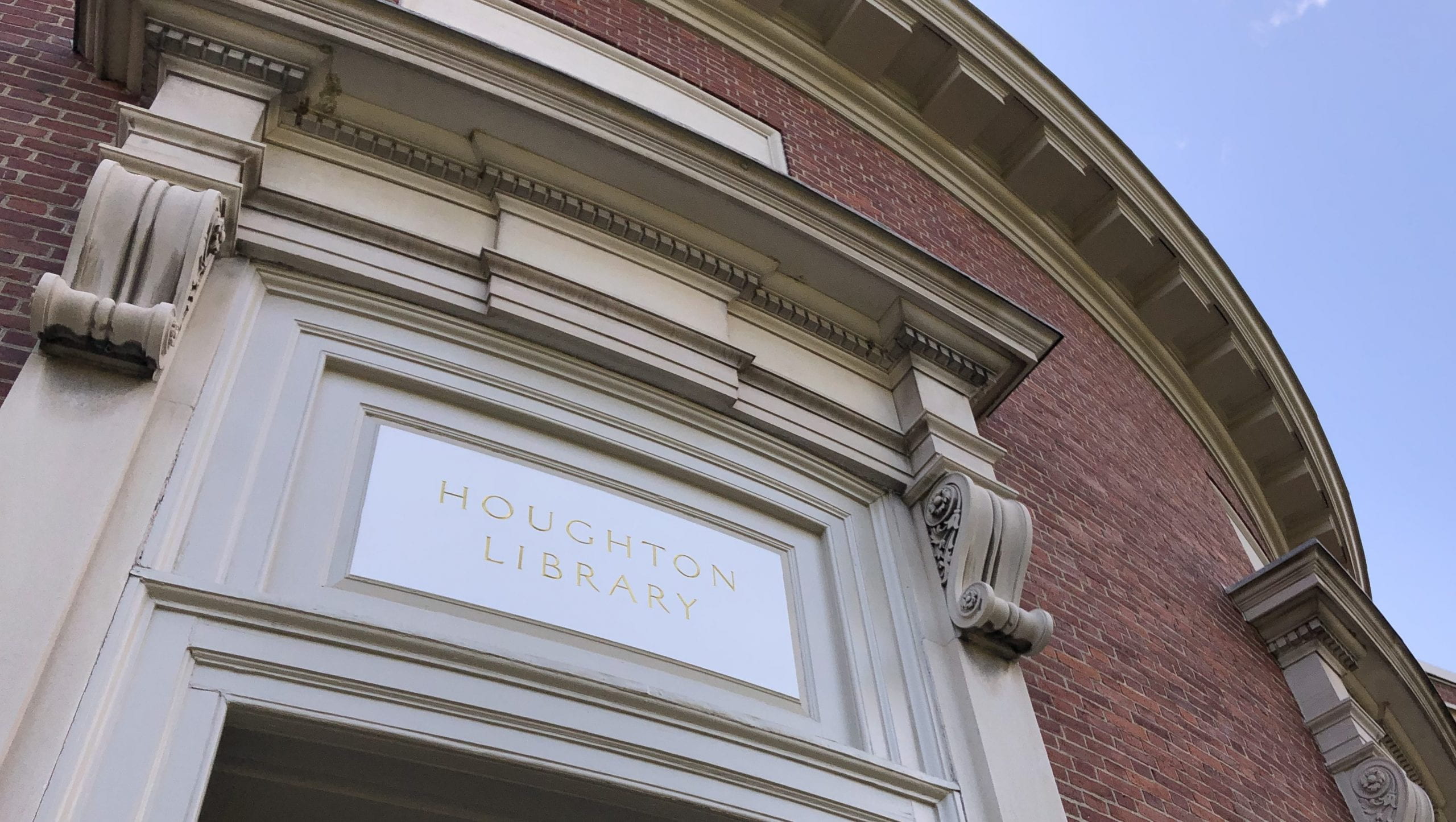[This post adapted from Kenneth Carpenter’s Reader’s Choice exhibition in the Houghton Library ]
The largest component of Houghton Library’s notable bookplate collection was the gift of Winward Prescott, class of 1909. Prescott’s interest in bookplates was clearly lifelong, for as early as 1914 he published a bibliography of bookplate literature, which he revised and republished in 1926.
Bookplates are an art form, and Prescott collected many because of their artistic merit; but he was also catholic in his collecting. He gathered the bookplates of both individuals and institutions. American and British bookplates predominate, but numerous Continental bookplates are also in the collection. Along with boxes devoted to bookplates of individuals and others to bookplates of institutional libraries, many of the bookplates are bound in volumes, arranged by type of institution or by locality. Some of these are entirely the creation of Prescott; others are interleaved volumes of published works in which Prescott has inserted other bookplates as supplementary illustrations. Sections within Prescott’s collection include: College bookplates; College Label Ex Libris; A.W. Pope, Some Remarks on Some Masonic Bookplates, extra-illustrated; Medical Bookplates; Library Interior Bookplates (mostly foreign); Public Library Bookplates; Public Library Labels; Canadian bookplates; Clubs, including student clubs; Special Libraries; and many more.
Bookplates clearly provide insight into an individual and into that person’s relationship with books–and into cultural pattern in different eras. Thus, an hypothesis is that nineteenth-century individuals who used books as tools had quite simple bookplates, in contrast to bibliographic collectors. The iconography of American institutional bookplates is another aspect of them that may be revealing to cultural historians. To consider such matters, one needs a collection, which in quantity goes well beyond the bookplate illustrations available in published volumes. The Prescott collection provides sufficient examples for study.
Individual bookplates also have their own interests. They can sometimes demonstrate the existence of an institution that has hitherto been unrecorded. Experience has shown this to be particularly the case with circulating libraries, which by their nature are dependent of an individual, and are thus ephemeral. Bookplates sometimes print rules of the institution, or even give historical information. A few show what the library looked like.
In addition to its research value, Houghton readers and staff may find in the bookplate collection illustrative materials for exhibitions and publications. It should also be noted that the Houghton Library has a provenance file (also Part II,Part III, Part IV) that records the existence of bookplates in books, thus helping to date the bookplate, something that, alas, a collection of bookplates alone does not do.
Kenneth Carpenter, Independent Scholar
Librarian at Harvard University, 1968-2000









